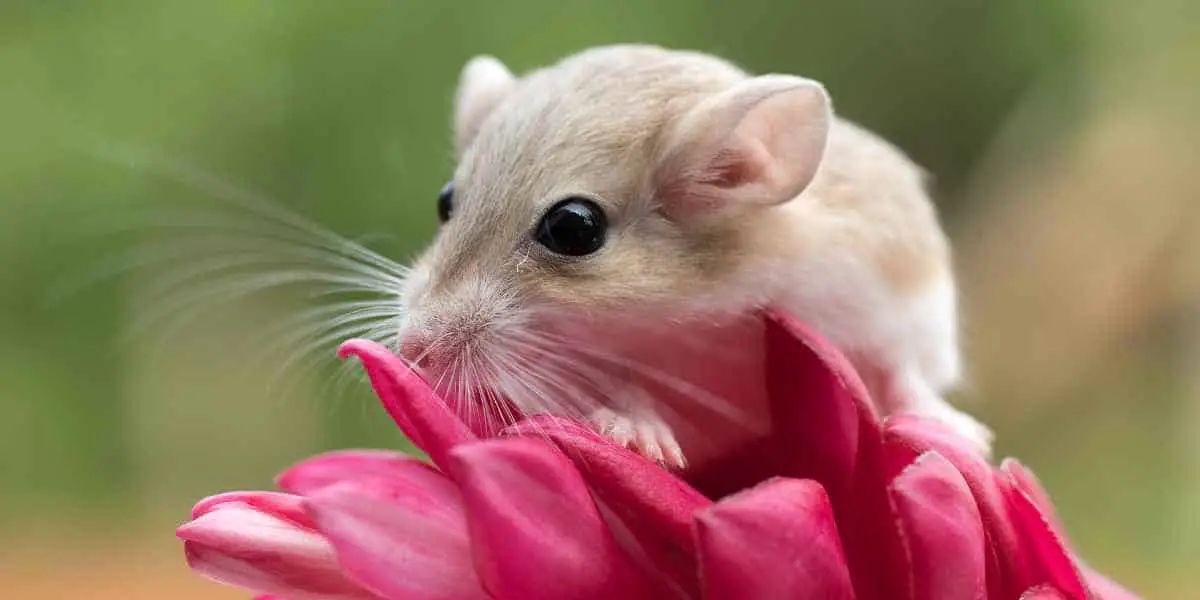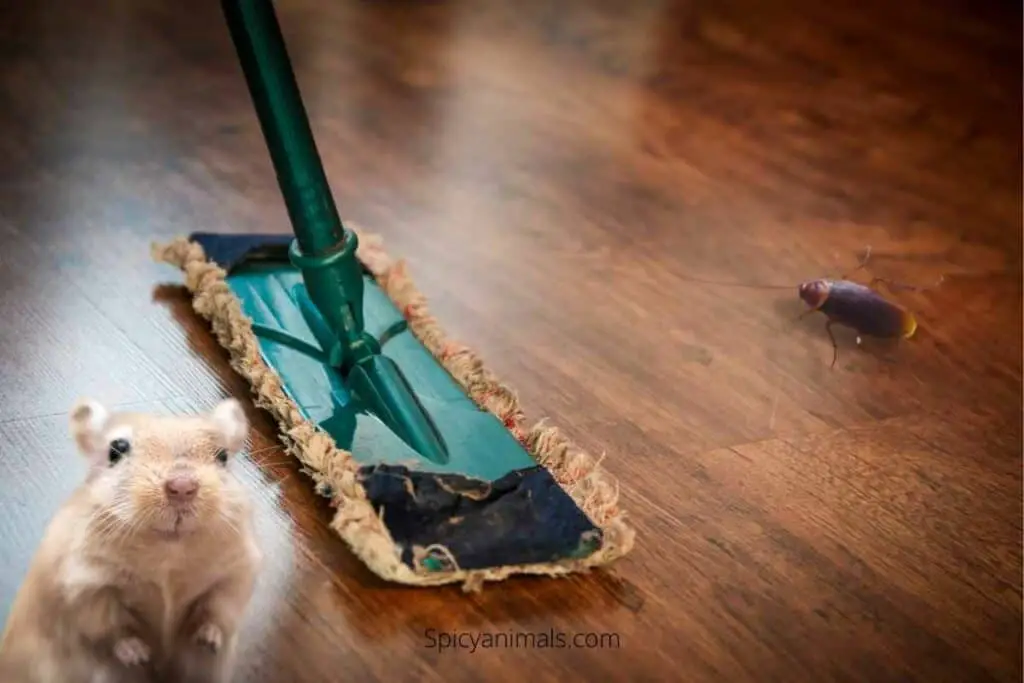Ah, the joys and quirks of apartment living—it’s a lifestyle that’s both liberating and, let’s face it, a bit limiting when it comes to space. So, you’re a proud dweller of a cozy apartment, and you’re itching to add a companion to your life. But wait, before you jump into the world of pet ownership, there are some things you should consider.
Space Savers: Many low-maintenance pets don’t require much space. A small cage or a compact aquarium often suffices, making them ideal for smaller living quarters.
Affectionate Yet Independent: Believe it or not, low-maintenance doesn’t mean low on love. Pets like chinchillas and parrots are not only low-maintenance but also incredibly affectionate.
Sociable and Fun: You might be surprised how sociable some low-maintenance pets can be. They offer companionship without demanding constant attention.
Nocturnal Wonders: If you’re a night owl, a nocturnal pet like a hamster could be your perfect match. They’re active when you are!
- Litter Box Logistics: For some pets, a litter box is non-negotiable. And in a small apartment, finding the right spot for it can be a puzzle.
- Noise Levels: While a parrot might be a fun and sociable companion, they can be loud. It’s essential to consider your neighbors when choosing a pet.
- Lease Limitations: Always remember to check your lease agreement. Some apartment complexes have restrictions on types of pets or require additional deposits.
Exercise Needs: Even low-maintenance pets need some form of physical activity. Make sure you can provide that within your limited space.
So, if you’re navigating the maze of apartment living and yearning for a pet, this guide is your treasure map. We’ll delve into the nitty-gritty of what pets fit best in your lifestyle and space, without turning your life upside down. Stay tuned!
Table of Contents
Key Takeaways
Rodent Wonders: Creatures like gerbils and chinchillas are not just adorable but also low-maintenance. They’re content with a small cage, some toys, and your love.
Aquatic Serenity: Fish, especially Betta fish, are almost meditative to watch and require only a small tank. They’re the epitome of low-maintenance pets for apartments.
Reptile Realness: Think snakes or geckos. They’re not cuddly, but they’re fascinating and require minimal space and care.
Feathered Friends: Parrots or smaller birds like canaries can be great companions. They’re sociable and offer vibrant companionship without needing a backyard.
Unconventional Choices: Ever thought of a hermit crab or a tarantula? They’re unique, low-maintenance, and sure to be a conversation starter.
-
Space Constraints: Measure your living space. Know how much room you can dedicate to a pet cage or tank.
Pet Policies: Always, and I mean always, check your apartment’s pet policy. Some places have restrictions on types of pets or require a pet deposit.
Your Lifestyle: Are you a night owl or an early bird? Some pets are nocturnal, while others are active during the day. Choose a pet that fits your lifestyle.
Maintenance Level: How much time can you realistically dedicate to pet care? If you’re always on the go, opt for pets that are easy to care for.
Noise Factor: Some pets are quieter than others. If you share walls with neighbors, it’s something to consider.
Longevity: Pets like turtles can live up to 20 years. Make sure you’re ready for the long-term commitment.
Social Needs: Some pets, like parrots, need more social interaction. Make sure you can provide the level of companionship your pet will need.
In a nutshell, choosing the right pet for your apartment involves more than just picking the cutest one. It’s about meshing their needs with your lifestyle and the limitations of apartment living. So, as you flip through this guide, keep these key points in mind. They’ll help you make an informed, happy choice.

The Reality of Apartment Living and Pet Ownership
Living in an apartment is like a dance—a tango between freedom and limitations. You’ve got your own space, but there are rules. You’ve got a busy life, but you crave companionship. So, let’s dive into the nitty-gritty of what it really means to be a pet owner in an apartment setting.
Rules and Regulations in Apartment Complexes
Pet Policies: Before you even think about getting a pet, it’s best to check your lease agreement. Many apartment complexes have specific rules about what types of pets are allowed, and some even ban pets altogether.
Security Deposits: Ah, the dreaded pet deposit. Some apartments require an additional security deposit for pets. Make sure you know what you’re signing up for.
Noise Ordinances: Your sociable parrot might be a hit at parties, but your neighbors might not appreciate their vocal talents. Be aware of any noise restrictions in your building.
Common Areas: Walking a dog? Using a shared lawn? Know the rules about pets in common areas. Some places even have designated pet relief areas.
Feeding Schedules: If you’re juggling a 9-to-5 job, social life, and gym sessions, consider pets that need to be fed less frequently or are okay with timed feeders.
Exercise Needs: Some pets need more physical activity than others. If you’re time-crunched, look for pets that require little maintenance in terms of exercise.
Social Time: Pets like dogs and cats might need more social interaction, which can be tough if you’re always out and about. On the flip side, a fish or a snake is less demanding of your time.
Routine Vet Visits: Don’t forget about those! Some pets require regular check-ups, so make sure you can fit those into your schedule.
Unexpected Events: Pets are unpredictable. Whether it’s a sudden illness or a litter box mishap, be prepared for unexpected pet-related tasks disrupting your routine.
So, as you can see, owning a pet while living in an apartment is a balancing act. It’s about finding the right pet that fits not just your living situation but also your lifestyle. And trust me, when you find that perfect companion, all the juggling will be worth it.
Rodents: The Low-Maintenance Choice for Small Apartments
Rodents often get a bad rap, but when it comes to apartment-friendly pets, they’re often the unsung heroes. They’re small, they’re cute, and they’re surprisingly low-maintenance. Let’s delve into two popular rodent choices for apartment dwellers: gerbils and guinea pigs.
Gerbils
Ah, gerbils—these tiny furballs are more than just cute faces; they’re also incredibly easy to care for.
Characteristics and Care Requirements for This Small Rodent
Size and Space: Gerbils are small and don’t require much space. A moderate-sized cage with some tunnels and toys is usually enough.
Diet: They’re not picky eaters. A balanced rodent food mix, some fresh veggies, and they’re good to go.
Social Needs: Gerbils are sociable animals. They enjoy the companionship of other gerbils, so consider getting more than one.
Activity Level: They’re nocturnal, so they’ll be most active when you’re home from work.
Advantages and Disadvantages of Keeping Gerbils in a Small Space
Pros:
- Minimal space requirements
- Low feeding costs
- Easy to clean
- Great for small living spaces
Cons:
- They’re nocturnal, which might not suit everyone’s schedule
- Not as affectionate as some other pets
Guinea Pigs
If you’re looking for a rodent with a bit more personality and a penchant for cuddles, say hello to the guinea pig.
Characteristics and Care Requirements for This Cuddly Rodent
Size and Space: Guinea pigs are larger than gerbils but still fit comfortably in a small apartment. They do need a larger cage and some playtime outside it.
Diet: They love fresh veggies and will need a constant supply of hay.
Social Needs: Guinea pigs are sociable and affectionate. They thrive on interaction, whether it’s with you or another guinea pig.
Activity Level: They’re not nocturnal, so they’ll be awake during your daytime hours.
Advantages and Disadvantages of Keeping a Guinea Pig in an Apartment
Pros:
- Affectionate and interactive
- Doesn’t require a litter box
- Good for families and singles alike
- Suitable for apartment living
Cons:
- Needs more space than a gerbil
- Requires more frequent cleaning
- Some people are allergic to them
So, whether you’re leaning towards the independent charm of a gerbil or the cuddly allure of a guinea pig, both make excellent, low-maintenance pets for apartment dwellers. Choose the one that fits your lifestyle and space, and you’ll have a companion that makes your apartment feel more like home.
Aquatic Pets: Low Maintenance and Small Space Friendly
When it comes to great apartment pets, aquatic animals often swim under the radar. They’re quiet, they’re beautiful to look at, and they don’t require walks or a litter box. Let’s dive into the world of Betta fish, one of the best low-maintenance pets for those who live in small apartments.
Betta Fish
Betta fish are like the runway models of the aquatic world—colorful, graceful, and a bit sassy.
Characteristics and Care Requirements for Keeping Betta Fish in an Aquarium in Your Apartment
Size and Space: Betta fish are small size animals that don’t need a massive aquarium. A small tank of at least 2.5 gallons will suffice, making them perfect for a smaller apartment.
Diet: Betta fish eat specialized Betta pellets, but they also enjoy live insects like brine shrimp and bloodworms.
Social Needs: Contrary to many small pets, Betta fish are best kept alone. They are territorial and do not do best in groups.
Activity Level: They’re not exactly intelligent pets, but they are active and enjoy swimming around the aquarium.
Advantages and Disadvantages of This Colorful Breed
Pros:
- Incredibly low-maintenance: You’ll only need to clean the tank at least once a week.
- Quiet and produce no noise, making them great apartment pets.
- Their small size makes them easy to move from apartment to apartment.
- They are good for beginners who are looking for a pet.
Cons:
- They can be aggressive towards other fish.
- They require a heater and a filter, which you’ll need to provide.
- Not interactive like apartment animals that roam around the apartment.
So, if you’re navigating the waters of apartment complexes that may have restrictions on furry or feathered friends, Betta fish emerge as a fantastic option. They’re easy pets to care for, require minimal food and water, and their vibrant colors will spruce up any living space. Plus, their small bowls or tanks are easy to tuck into a corner, making them perfect pets for any smaller space.
Reptiles: The Exotic Low-Maintenance Pets for Apartment Living
Reptiles might not be everyone’s cup of tea, but for those who are fascinated by these cold-blooded creatures, they can be some of the best low-maintenance pets. They’re unique, they’re intriguing, and they’re surprisingly well-suited for apartment life. Let’s explore some popular reptilian options: snakes, geckos, and bearded dragons.
Snakes
Snakes, particularly varieties like the corn snake, are a unique choice for pet enthusiasts who are looking for something a bit different.
Characteristics and Care Requirements for Snakes Like the Corn Snake
Size and Space: Corn snakes are medium-sized, making them suitable for apartments. They require an enclosure, but it doesn’t have to be massive.
Diet: They eat small rodents, which can be purchased frozen. No need to play hunter!
Social Needs: Snakes are solitary creatures. They’re content without a mate or companion.
Activity Level: They are relatively inactive, especially during the day, making them low maintenance pets for apartments.
Advantages and Disadvantages of Keeping a Snake in an Enclosure in an Apartment
Pros:
- Low maintenance: They eat infrequently and don’t require walks or playtime.
- Small size and relatively easy to care for.
- They can live up to 20 years, offering long-term companionship.
Cons:
- Not interactive or cuddly.
- Some people are scared of snakes, which could be a factor if you have frequent guests.
Geckos
Leopard geckos, with their vibrant colors and patterns, can spruce up any living space.
Characteristics and Care Requirements for Leopard Geckos
Size and Space: They are small and require a modest enclosure with a heat source.
Diet: They eat insects like crickets and mealworms.
Social Needs: They are solitary but can be kept in pairs if you want more than one.
Activity Level: They are nocturnal and most active during the evening.
Some Advantages and Disadvantages of Keeping a Lizard in a Small Apartment
Pros:
- Easy to care for and feed.
- Quiet and unobtrusive.
- They can be kept as pets without causing issues in most apartment complexes.
Cons:
- They require a heat source, which means an additional cost.
- Not as interactive as mammals or birds.
H3: Bearded Dragons
Bearded dragons are the social butterflies of the reptile world. They’re interactive, fun, and full of personality.
Characteristics and Care Requirements for This Reptile
Size and Space: They are medium-sized and require a larger enclosure than geckos.
Diet: They have a varied diet that includes vegetables and insects.
Social Needs: They are social and enjoy being handled, unlike many other reptiles.
Activity Level: They are diurnal, meaning they are active during the day.
Advantages and Disadvantages of Keeping a Bearded Dragon in a Small Living Space
Pros:
- Interactive and enjoyable to watch.
- They don’t like to chew on furniture or make noise.
- Suitable for those who want a pet to interact with.
Cons:
- Require a larger enclosure and a UVB light.
- Not as low-maintenance as other reptiles.
So, whether you’re drawn to the solitary elegance of a snake, the vibrant allure of a gecko, or the interactive charm of a bearded dragon, reptiles offer a range of exotic pets that are well-suited for apartment living. Just remember to check any pet policies, as apartment complexes may have restrictions on exotic pets.
Unconventional Choices: Snails and Other Low-Maintenance Pets
When it comes to pets, dogs and cats usually steal the spotlight. But what if you’re the type who likes to zig when everyone else zags? If you’re looking for something a bit more unconventional, yet still low-maintenance and apartment-friendly, then this section is for you. Let’s delve into the world of garden snails, hermit crabs, and even tarantulas.
Garden Snails
Low Maintenance: Garden snails are about as low-maintenance as you can get. They eat a variety of foods like fruits, vegetables, and even cardboard.
Space: They require very little space. A small terrarium will do.
Quiet: Snails make no noise, making them ideal for apartment settings where noise can be a concern.
Lifespan: They can live up to 3 years, offering a shorter-term commitment compared to other pets.
Hermit Crabs
Low Maintenance: Hermit crabs are easy to care for. They eat a simple diet of commercial hermit crab food, fruits, and veggies.
Space: A small aquarium or terrarium is sufficient.
Social: They are social creatures and enjoy the company of other hermit crabs.
Lifespan: They can live up to 10 years, offering a long-term but low-maintenance companionship.
Tarantulas
Low Maintenance: Tarantulas require minimal care. They eat insects and can go for weeks without food.
Space: A small terrarium with a lid (they can climb!) is all you need.
Quiet: They make virtually no noise and are very unobtrusive.
Lifespan: Some species can live up to 20 years, making them a long-term commitment.
Cool Factor: Let’s face it, owning a tarantula is a conversation starter!
So, if you’re the adventurous type looking for a pet that’s out of the ordinary, these unconventional choices might just be what you’re looking for. They’re low-maintenance, require minimal space, and are sure to spark interest and conversation. Plus, they’re well-suited for apartment living, especially if you’re in a complex that has restrictions on more common pets.
What to Avoid: Pets That Seem Low-Maintenance but Aren’t
Ah, the allure of small, fluffy, or shelled creatures! They look so innocent and manageable in those pet store cages. But don’t let their size fool you. Some pets that seem low-maintenance at first glance can actually be quite demanding, especially in a small apartment setting. Let’s debunk some myths about hamsters, rabbits, and turtles.
Hamsters
Nocturnal: These little furballs are active at night. If you’re a light sleeper, the sound of a hamster wheel might not be music to your ears.
Space: Despite their small size, hamsters enjoy space to roam and explore, which can be challenging in a small apartment.
Short Lifespan: They live for about 2-3 years, which can be a downside if you’re looking for a long-term companion.
Rabbits
Space: Rabbits need a lot of space to hop around. A small cage won’t do; they need room to roam.
Diet: They require a varied diet that includes fresh hay, vegetables, and special pellets.
Chewing Habit: Rabbits love to chew. From your furniture to your electrical cords, nothing is safe.
Turtles
Long Lifespan: Some turtles can live up to 20 years or more. That’s a long-term commitment!
Space: They require a sizable tank or pond, as well as a dry area to bask.
Diet: Their dietary needs can be complex, including a mix of proteins and vegetables.
Common Misconceptions About Small Pets Like Hamsters
“They’re Easy to Care For”: Many people think that because hamsters are small, they must be easy to care for. This is not necessarily true. They have specific dietary and space needs.
“They’re Good Starter Pets for Kids”: While they can be, their nocturnal nature and relatively short lifespan can make them less than ideal for young children.
“They Don’t Need Much Space”: This is a common misconception. Hamsters enjoy burrowing and exploring and do best with ample space.
So, before you fall for the cute face of a hamster, the floppy ears of a rabbit, or the slow grace of a turtle, make sure you know what you’re getting into. These pets may not be the best fit for a small apartment or for those looking for a low-maintenance companion. Always do your research and consider your living situation before making a decision.
FAQ: Common Questions About Low-Maintenance Pets for Small Apartments
Navigating the world of pet ownership while living in an apartment can be a maze of questions and uncertainties. Here, we tackle some of the most frequently asked questions to help you make an informed decision.
What Are the Best Low-Maintenance Pets for Apartment Living?
Rodents: Guinea pigs and gerbils are both excellent choices for their low maintenance and small size.
Fish: Betta fish are a popular choice due to their minimal space requirements and low care needs.
Reptiles: Snakes and geckos are great for those who want something a bit more exotic but still low-maintenance.
Unconventional Choices: For the adventurous, garden snails and hermit crabs are unique, low-maintenance options.
How Do I Choose the Right Pet for My Small Apartment?
Space: Evaluate how much space you can realistically dedicate to a pet. Some pets need more room to roam than others.
Lifestyle: Consider your daily routine. Some pets require more attention and care than others.
Maintenance Level: Think about how much time you can commit to caring for a pet. Some are more self-sufficient than others.
Pet Policy: Always check your apartment’s pet policy to make sure you’re allowed to have the type of pet you’re considering.
What Are the Legal Restrictions on Pets in Many Apartment Complexes?
Type of Pet: Some complexes have restrictions on the types of pets you can keep. Commonly banned pets include dogs of certain breeds, snakes, and exotic animals.
Number of Pets: There may be a limit on the number of pets you can have.
Size Restrictions: Some apartments have weight limits for pets, especially dogs.
Pet Fees: Many apartments require a pet deposit or monthly pet rent.
Documentation: Some complexes may require documentation like vaccination records or even a pet resume.
Choosing a pet for apartment living is not a decision to be taken lightly. It involves considering multiple factors, including space, lifestyle, and even legal restrictions. But with the right information at hand, you can find a pet that not only fits your life but also fills it with joy.
Conclusion: Final Thoughts on Choosing the Best Low-Maintenance Pets for Apartment Dwellers
Choosing a pet is like choosing a new roommate. You’re inviting another living being into your home, your life, and your daily routine. When you live in a small apartment, this decision becomes even more critical. Space is at a premium, and your lifestyle might already be hectic. That’s why low-maintenance pets often make the most sense for apartment dwellers.
The key takeaway here is to do your homework. Don’t just fall for the first cute face you see at the pet store or the animal shelter. Think about your daily routine, the amount of space you have, and how much time you can realistically dedicate to pet care. And always, always check your apartment’s pet policy to avoid any legal complications.
Remember, a pet isn’t just a cute accessory; it’s a commitment. But it’s a commitment that can bring you immeasurable joy, companionship, and even a sense of peace. So take your time, weigh your options, and make an informed decision. Your future furry, scaly, or feathery friend will thank you for it, and your life in your small living space will be all the richer for it.
So go ahead, take the plunge (or the hop, or the slither). Your perfect pet is out there, just waiting to make your apartment feel even more like home.




